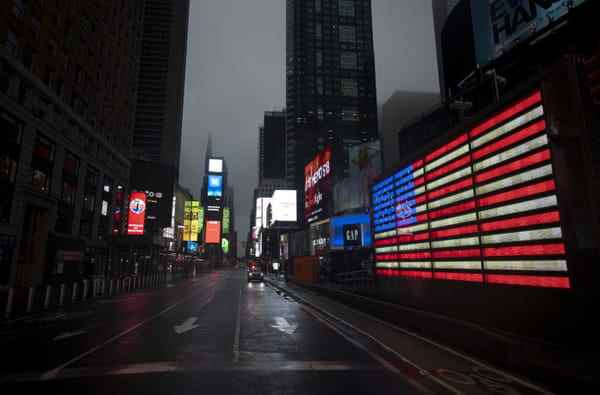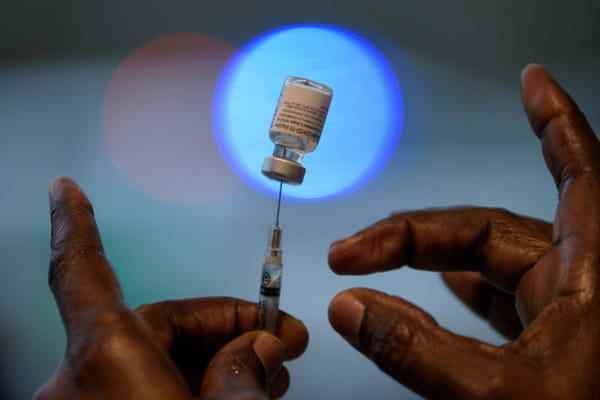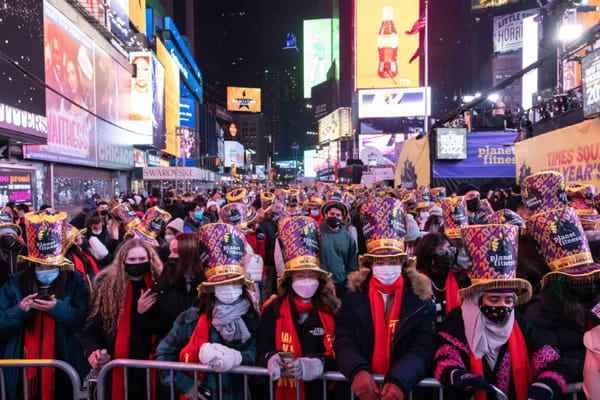The United States will cross the staggering milestone of one million deaths from Covid-19, but, like New York brought to its knees in 2020, the country wants to turn the page despite a slight rebound in the epidemic since a month.
With more than 998,000 deaths as of May 11 according to Johns Hopkins University and at the rate of hundreds of deaths per day, the fateful bar should be reached by this weekend or early next week.
After several months of decline in the pandemic coronavirus in the officially most bereaved country in the world (ahead of Brazil, India and Russia), the United States has been recording a daily increase in the number of cases for the past month.
The country finds itself in a context of lifting the obligations to wear a mask, now simply recommended indoors in the majority of the country, and a fourth dose of vaccine which is currently only open to people over 50. years.
The rebound in the number of cases is due to sub-variants of Omicron, which are more transmissible than the previous strains. However, its effects seem less serious in a population that is 66% completely vaccinated, and more than 90% for those over 65 years old.
After more than two years of pandemic and several waves of variants of the coronavirus, America intends to turn the page on the pandemic.
– New York excitement –
Like the return to favor of the economic and cultural magnet that is New York, an incredible mosaic of communities and social classes which seems to have regained its legendary effervescence.
New Yorkers, American and foreign tourists return to the theaters of Broadway, photograph themselves under the giant digital advertising signs of Times Square, climb the Statue of Liberty, ride a horse-drawn carriage in Central Park, on foot and by bicycle on the Brooklyn Bridge, rush to the most beautiful museums in northern Manhattan and admire from the top of the most recent skyscrapers this urban monster nestled on the edge of the Atlantic.
So many attractions which have been gradually reopening since 2021 and have made the worldwide reputation of a megalopolis of 8.4 million souls.
Midday and evening, the traffic is again hellish in the center of Manhattan, its financial and commercial lung.
The queues are getting longer in front of the tens of thousands of restaurants, stalls, take-out trucks for white-collar and blue-collar workers. The trendiest terraces in Manhattan and Brooklyn are once again crowded.
“We’ve been waiting for this return from New York for a long time,” breathes Alfred Cerullo, who heads Grand Central Partnership, a pro-business lobby in Manhattan. “Without a doubt, he told AFP, you can feel the energy of people in the street”.
– Nightmare of 2020 –
The contrast is striking with the nightmare of spring 2020.
Epicenter of the pandemic, the “city that never sleeps” had been empty for weeks, deserted like in a science fiction film.
The huge arteries of Manhattan and Brooklyn were animated only by the anxiety-provoking sirens of the emergency services, with overwhelmed hospitals and morgues forced to store the bodies of victims in refrigerated trucks.

Times Square in New York, totally deserted during the Covid-19 pandemic in the spring of 2020.
© AFP – Johannes EISELE
Janice Maloof-Tomaso, a nurse who worked near Boston at the time, recalls that many caregivers could not bear to “see death”. “Some were traumatized, and many left.”
Around 40,000 New Yorkers have lost their lives to Covid since the spring of 2020 and both the island of Manhattan and the more fashionable and popular gigantic neighborhoods of Brooklyn and Queens bear the scars of the pandemic.
Lacking customers for months, thousands of small businesses have gone out of business, their windows still covered with wooden boards or posters of real estate agents.
– “Worried” trader –
Among these small store owners, Frank Tedesco runs a jewelry store in the very upscale Westchester County, north of the Bronx.
He confides to AFP that he saved his shop in 2020 thanks to public aid and his own assets, but he feels “obviously worried” because he does not “(know) what will happen” and how he could withstand another economic “shock” caused by a return of the epidemic.

The first vaccine against Covid-19 was available as early as December 2020, less than a year after the first cases were reported in China
© AFP – Mark Felix
Traumatized by the nightmare of 2020, New Yorkers remain on their toes. The mask is still very common on the street and indoors – and mandatory in transport.
And teleworking has become a habit: according to the weekly barometer of the security company Kastle, the office occupancy rate in New York still peaks at 38%.
The boss of the investment bank Goldman Sachs, David Solomon, acknowledged on May 2 on CNBC that the rate of employees returning to the office barely reached 50 to 60% of the workforce, against 80% present before the Covid.
All rights of reproduction and representation reserved. © (2022) Agence France-Presse

